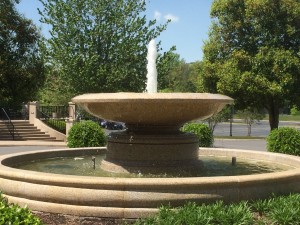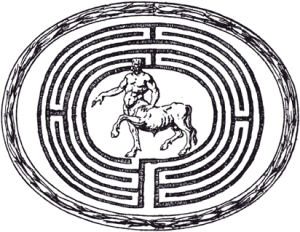Give serious attention to what comes naturally to you… to what gets YOU juiced… to what gets YOU moving at the start of each day.
— Bob Proctor (@bobproctorLIVE) February 23, 2015
Update (Later the Same Day): You here this phrase all the time: "Why have I been put on this earth?" Part of our brain laughs it off as a joke, and another part resonates with it. That's because half the day we are pummelled with messages of our insignificance, as if to trance us into being "cogs in the wheel," and the other half of the day, the delicate but real song of our soul whispers to us quietly, "You are the one. You have all the answers." Is it any wonder we are schizo? But seriously, this phrase comes up so often, you have to believe it is an archetype of the unconscious. The Super-Ego always wins in conversation by turning it into a joke, so even when it stirs the soul at cocktail parties, its seriousness quickly dissolves by Monday morning. Still, its mere existence has profound implications for the existence and drive behind this article/blogpost.
“Life is a game of either your getting warmer or your getting cooler, and everything in your body and in your emotions responds with relaxation when you head towards something that’s right for you. That’s ‘warmer.’ All you have to do to find your purpose is keep moving toward warmer and away from cooler.” – Martha Beck
My favorite book is “The Hero with a Thousand Faces.” Joseph Campbell is my favorite person too. I think I first read it in about 2002, and it just blew my mind. One of the most important sections describes that a Hero “answers the call to adventure.” That’s probably the most important action the Hero takes, in fact what makes him a hero in the first place. Unfortunately, “The Hero” wasn’t written as a Self-Help book, so I never could translate it into my own life. For years, and still to this day, I kept asking myself, “What is my calling? What is my calling?” But I couldn’t “hear” an answer. Sometimes it’s a matter of wording. Some time later I was listening to Deepak Chopra’s “7 Spiritual Laws of Success” and when he came to the section on finding your purpose he said, “Ask yourself, ‘Why am I here’?” I remember, I was in the shower when I heard that, and it floored me. Maybe it was just the different wording from “What is my calling” to “Why am I here?” That “Why am I here?” phrasing has a deep resonance spiritually, as if your purpose was somehow equal to that of Christ or the Buddha. For the western mind, it is exhilarating to hear it put that way, an opening in the soul happens, but its also difficult in our modern society, with its day to day demands, to sustain that emotion. In our Western society we are much more likely to think of purpose as what should my career be? A writer, scholar, actor, musician, athlete, politician, businessman? The other day, I had a hint of what I should do. I had been allowing myself a little time in the morning and evening to do the thing I loved (In my case it was reading, specifically fairy-tales and mythology) but not during the heart of the day. During that time, I thought I had to be “practical” find something practical to do, even though it was literally was sucking the soul out of me. Finally it struck me: Why not hang on to this thing I love all day long? Just stay with it, stay with it, don’t let anyone scare you off of it, and let it keep opening, opening, opening? To me, not only did this feel right, but it resonated with the story of Theseus escaping from the “Labyrinth.” He held on to a wax string. If he had let go of that string, even for a minute, he might have been lost forever and never escaped. So, that’s my new idea. Let me know what you think, and I’ll try to keep you updated. You know, last week I learned that the phrase “a ventura” means “by chance” in Italian. I also noticed reading fairy-tales how nothing is planned. Everything happens spontaneously, “by chance.” It struck me then that that’s why and adventure can’t happen by planning. Everyone’s adventure is unique and spontaneous and it sort of “happens” to you, develops outside of your control or planning, but the way to trigger it is to “hold on to the string” of where your soul is telling you to go. Not where your lust is telling you to go, not where your fear is telling you to go, and not where your society and social duty is telling you where to go, but where your soul is telling you to go.
“You must let go of the life you have planned in order to accept the life that is waiting for you.” – Joseph Campbell “The Kingdom of Heaven will not come through expectation, but rather the Kingdom of Heaven is spread upon the Earth but men do not see it.” – Christ, “The Gospel of Thomas.”


